The one thing that’s a constant here is always innovating and creation of new plane designs. The following show some of the progress being made at current and past, but not limited to. Also, this section is also in tangent, advancements with where I am going, news, updates and the rest along with the Blog page.
Slow Stick Cub
This is the latest along new designs called the Slow Stick Cub. This, like the Jenny Stick is based upon the original GWS Slow Stick format, scale, wing and tail area. The fuselage utilizes the same stock as the Jenny stick with the addition to a tail plate mounting section which allows it to be removable, a great feature for both repairs and one can use it for mounting additional themes which are going to be developed. This shape, curves and the rest are stylized after the Piper Cub.

The control surfaces and tail feathers are taped in place for visuals on the photo’s.
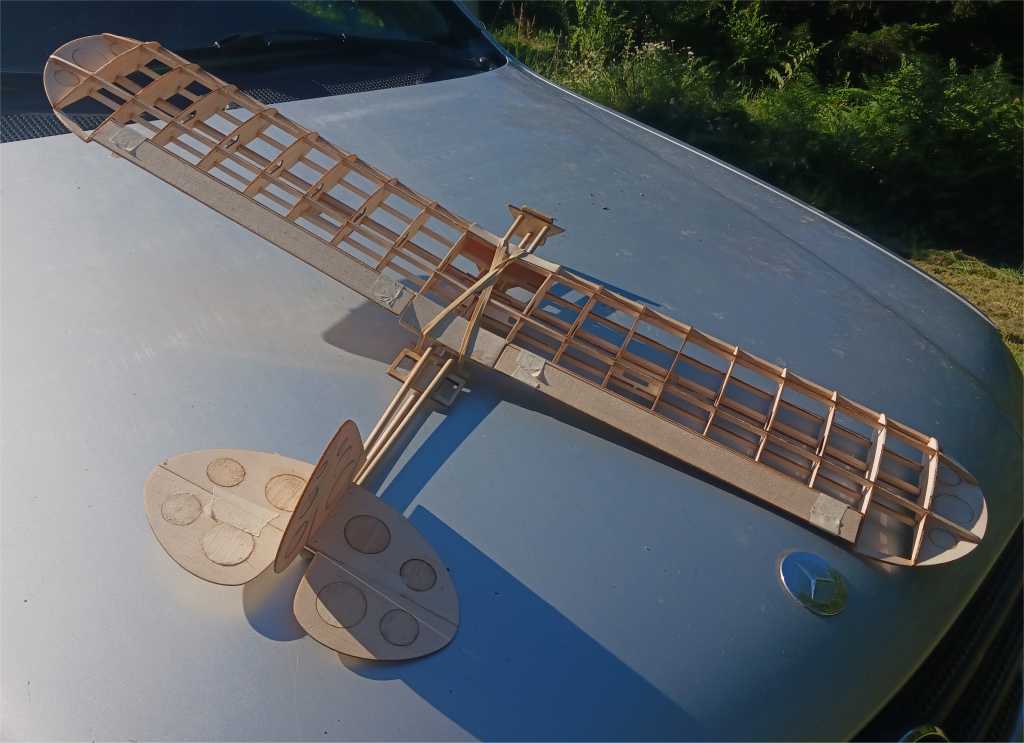
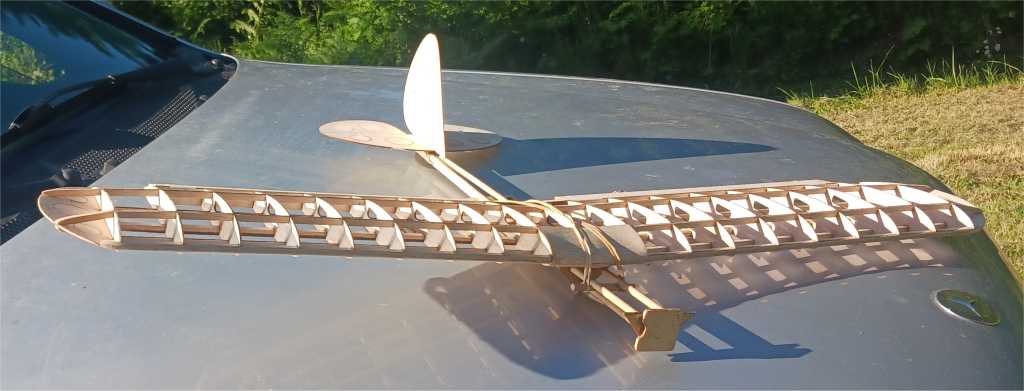

The format is robust and easy to handle with thick stock. The wing weighs in without covering the same as the original Jenny Stick which is on the better end for weight to chord and length for this style of plane. The thick modified Clark Y airfoil will produce very good lift, the plane itself swimming through the air when it comes down to it, which is what you want with a slow flyer. The lightening holes turned into strengthening holes with gluing them in cross grained greatly help on keeping the surfaces rigid and saves a lot of time on assembly compared to more traditional formats.
It’s going to be sharing many of the same build guide elements and instructions as the Jenny Stick and it’s technically ready to kit out. Pre-launch priced at $60.00, shipped, full kit without the Walmart 1/4″ dowels included since you can get them there or most hardware stores. I can also throw in some covering as well, the standard clear Doculam, will be using the same stock, in yellow tinted for this particular bird too.
Comet Sparrow
Sharing a fun little free flight plane that has been recreated as a new kit called the Sparrow, done up originally by Comet back in the 30’s or 40’s. 16.5″ wingspan, in this format, some additional refinements have been put into place along with. This kit will be available formally soon, you can still order it in the pre-launch for $25.00 shipped.
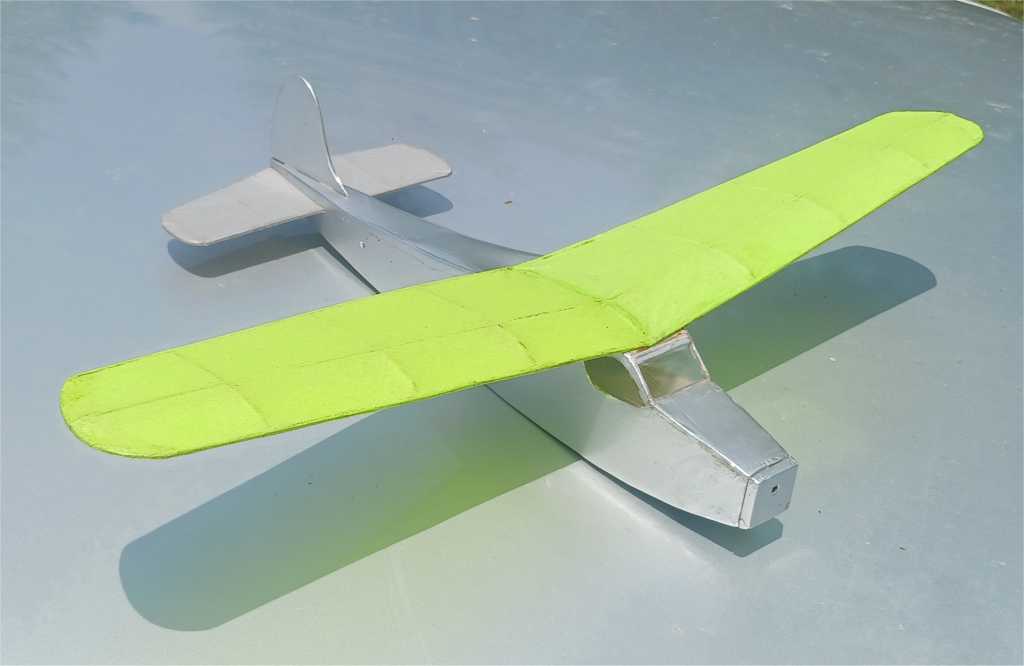
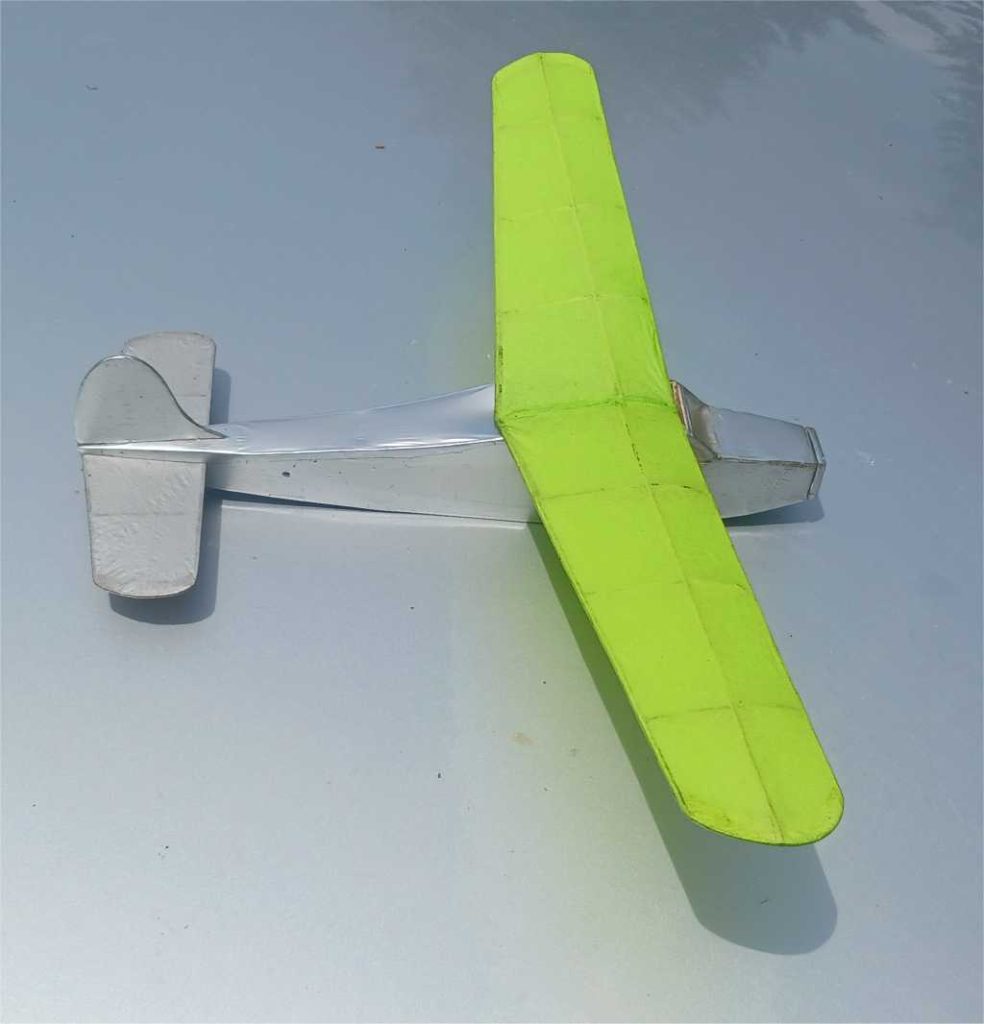
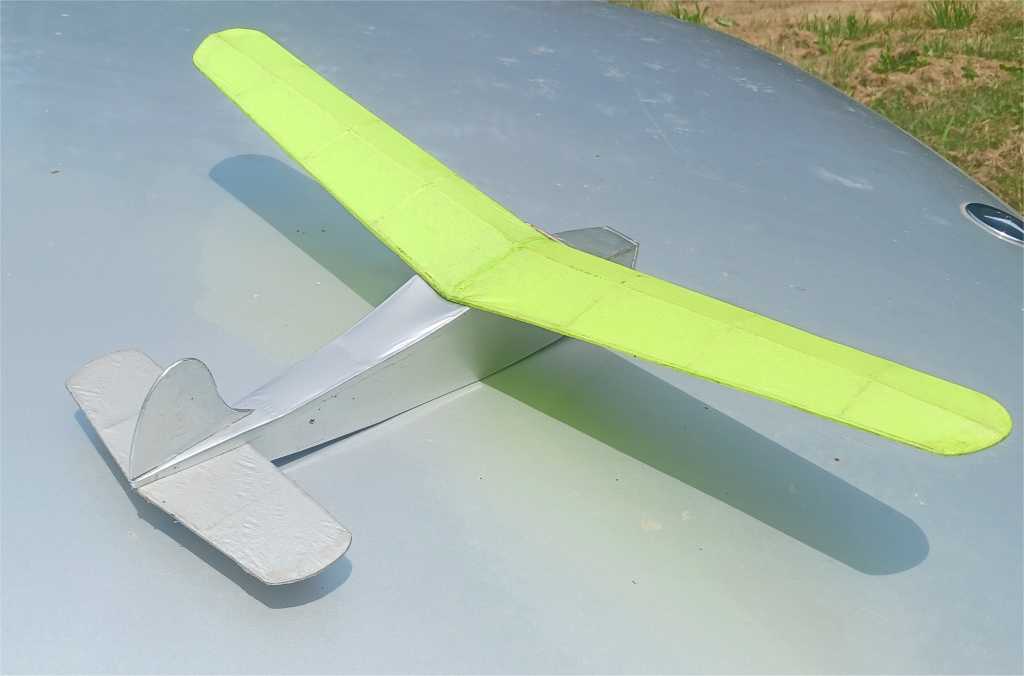
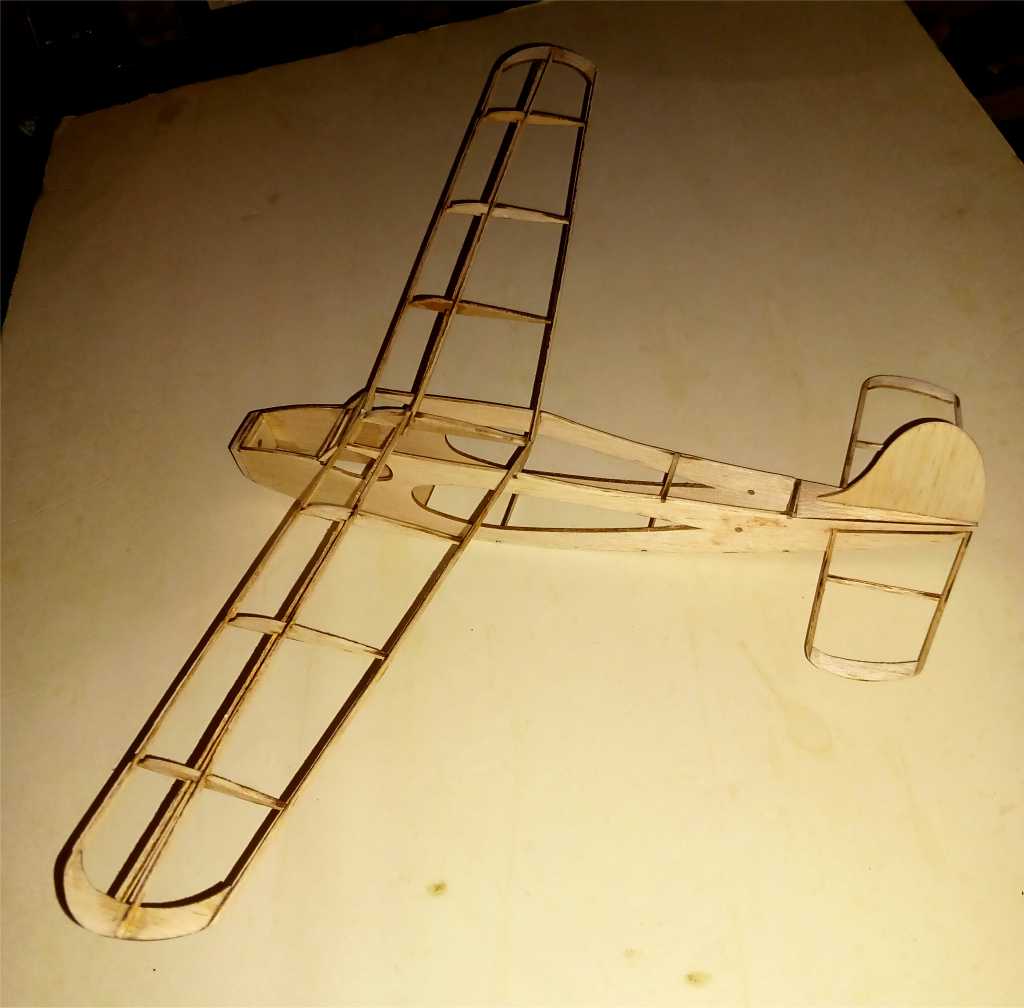
Sleek Streek
If you are following the blog page, I have been working upon additional, free flight and to including toy grade versions that have a serious edge over the standard for performance, not merely kids toys any more but also in an affordable format so that allowance money can be saved up to purchase.
This is the performance version of a scaled up, circa 70’s version, Comet owned, North Pacific Sleek Streek.
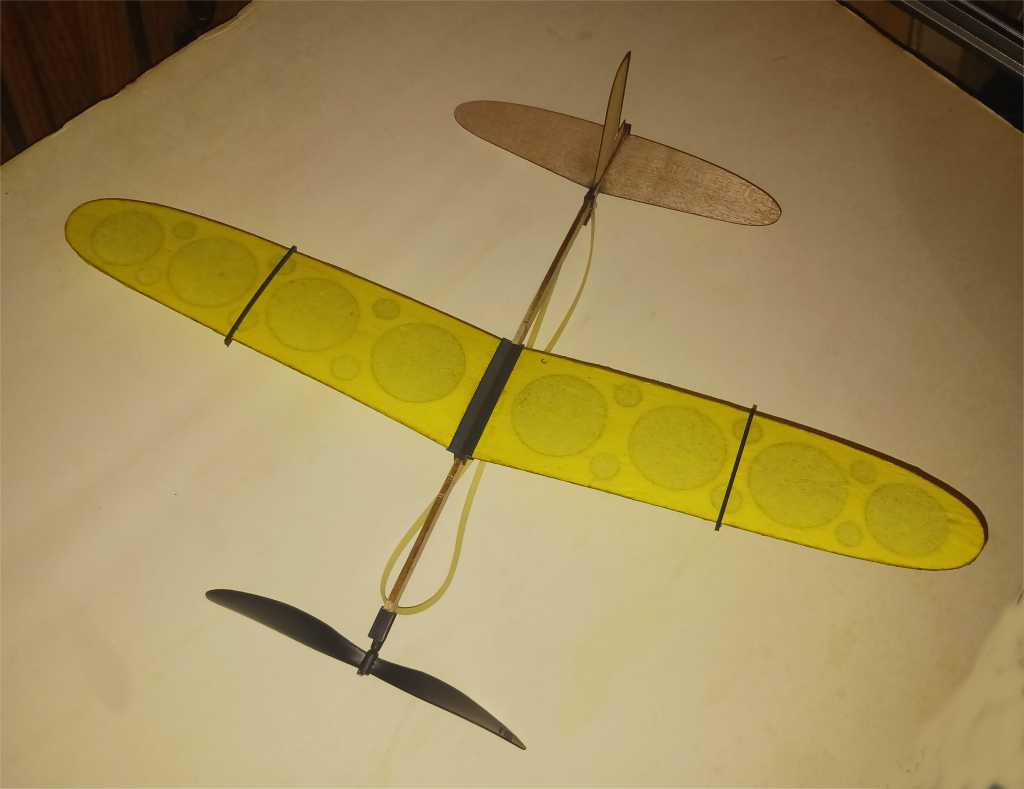

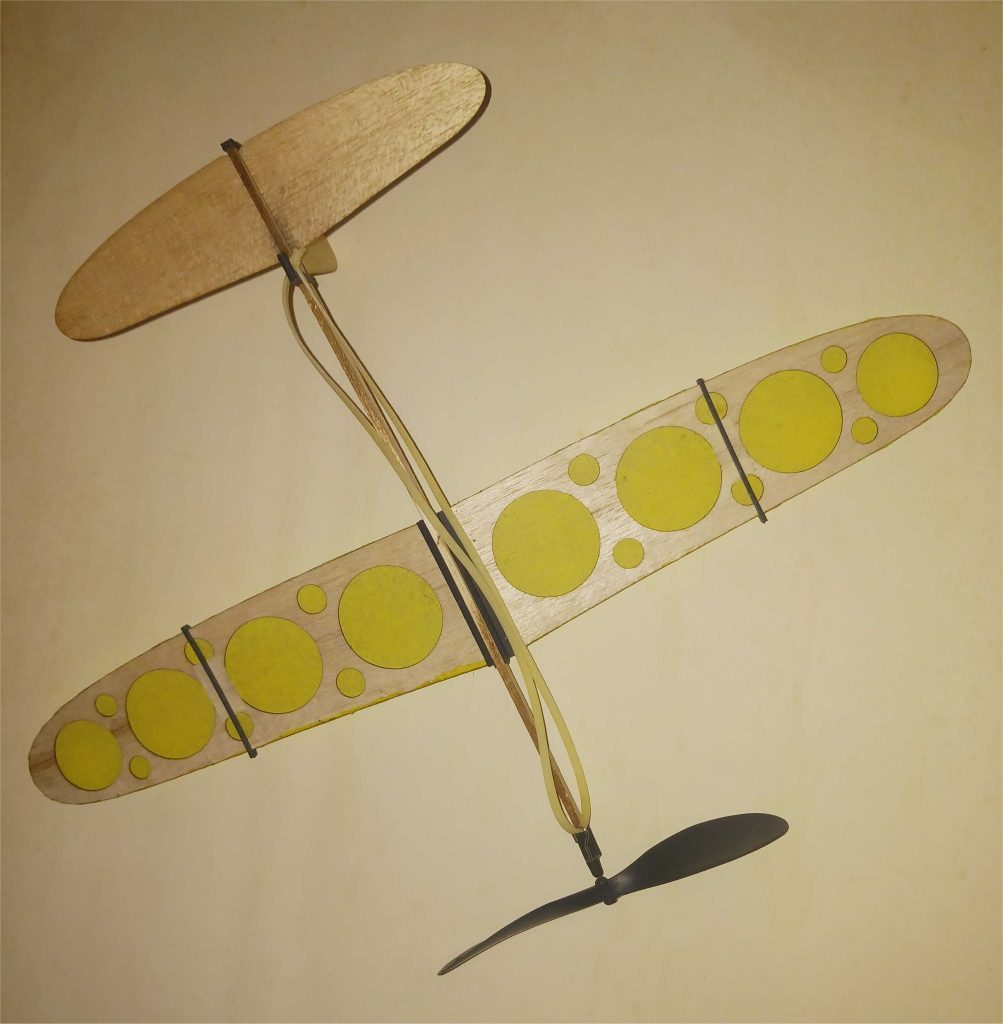
There will be a couple versions of this and the gear going along with are not typical for this grade and type of plane, being over the top in quality. This version is a great way to learn simple tissue covering.
Look forward to the next page added to the website to cover it and others for this venue.
Now released is a 26″ wingspan glider easy build kit called the Sparrow. I went out of my way to keep it new or first time builder friendly. Initial stage is free flight with the capacity to upgrade to RC. Free flight version with ballast added is 46 grams.

Look forward to the next page added to the website to cover it and others for this venue.
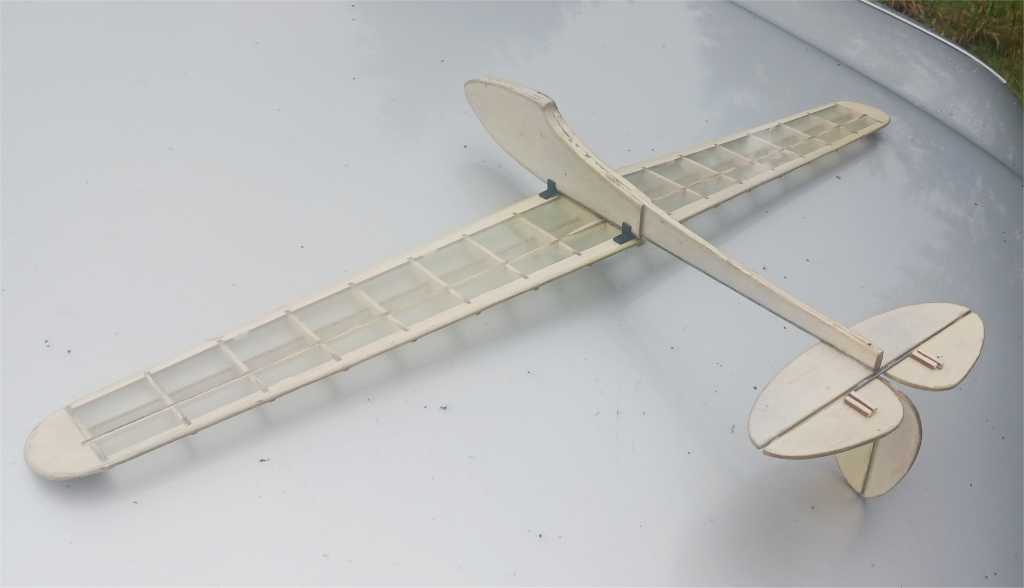
This will be ready once the build guide is complete. I also went so far as to create a covering tutorial for it to show options and how I cover my planes which will be shared along with. RC additions are coming next.
Adding onto the options for Happy RC Flyer delves into 3d printed additions. This is a fun and challenging field to be addressing and at this stage, it’s part fine tuning, part helping others along to get into using the gear to include designing along with supplementing the RC plane kits being produced. For now, sharing a tutorial to help others along the way with bringing in 2d CAD files for use on a 3d printer.
Past development was a 26″ wingspan Extra. Keeping the weight below 250 grams and a simple profile fuselage makes it easy to assemble and fly in smaller areas. It can be set up for flying 3d or a sports type flyer by incorporating two different styles and sizes of ailerons making this a multi purpose plane.
Look forward to the next page added to the website to cover it and others for this venue.
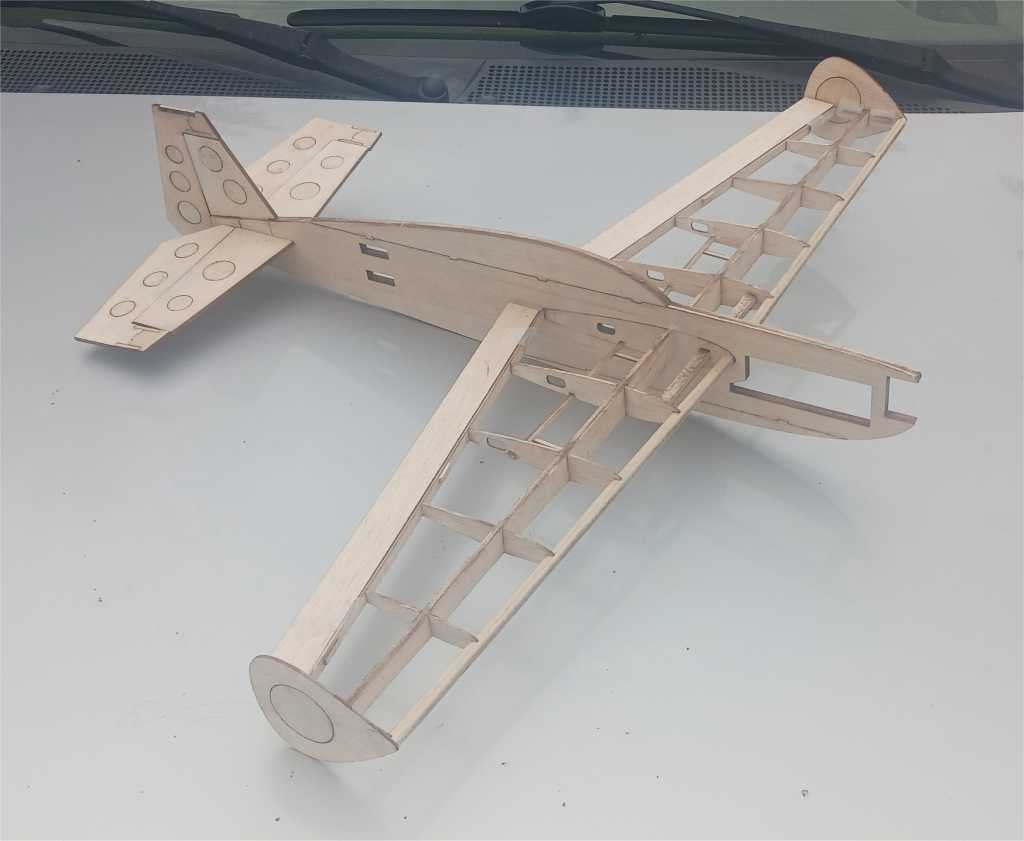
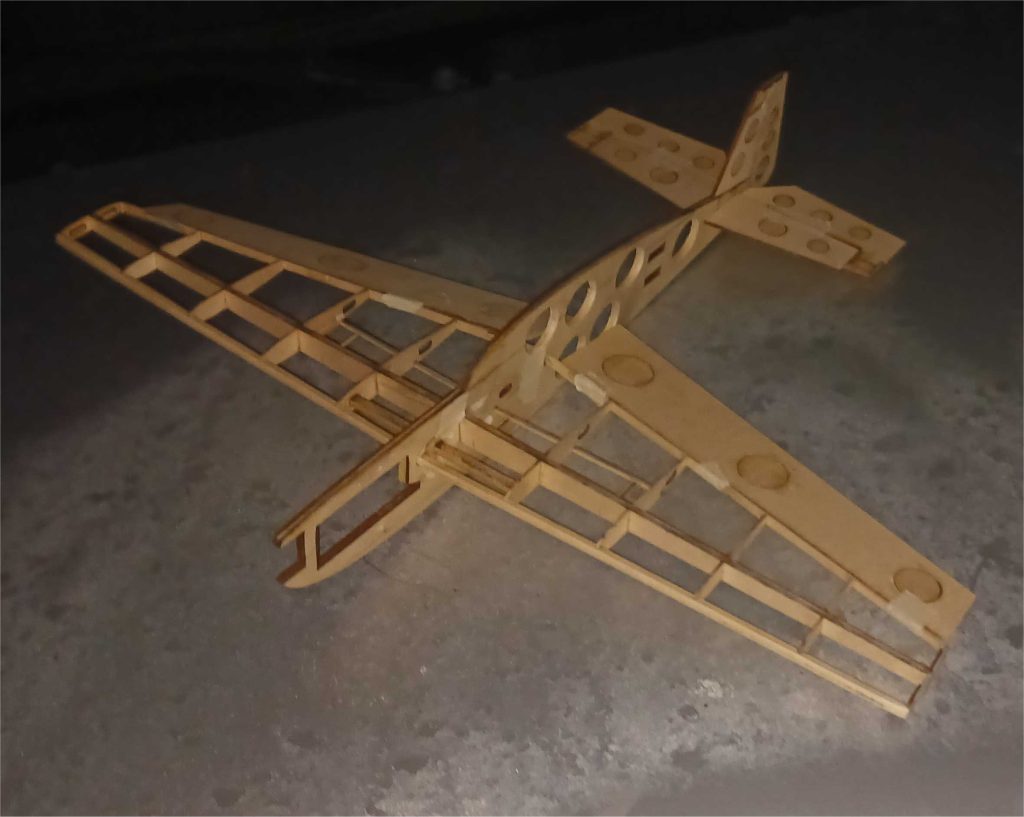
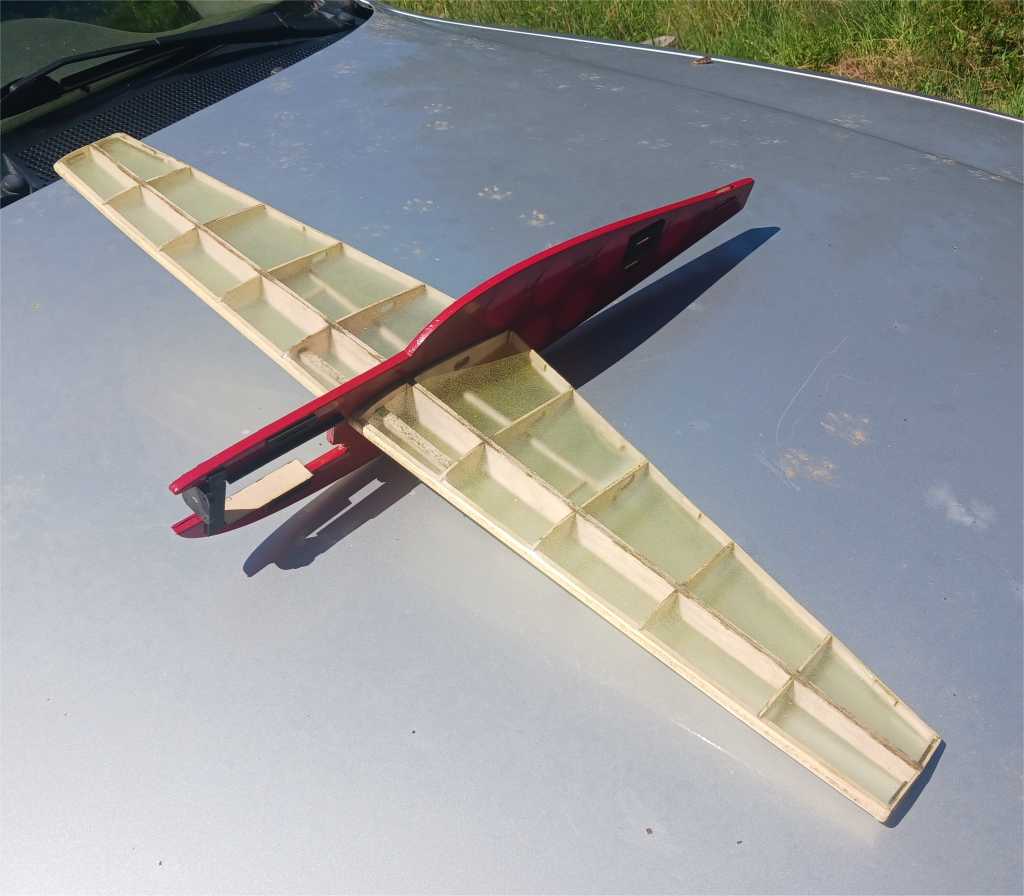
Gearing this up and testing the new combination proved quite impressive, this is in excess along the power to weight ratio.


Sharing the taped together components, 3d style format.


Sharing one inspired by the classic Curtis Jenny, a true gem in the world of aviation history.
With a wingspan of 38 inches, this upcoming model is destined to be a superb park flyer.
While paying homage to the iconic Curtis Jenny, I’ve made some thoughtful revisions to enhance its performance and ease of construction. One significant update is the incorporation of a Clark Y airfoil which will be shown on the next update, a choice that promises improved aerodynamics and handling capabilities compared to the traditional under-cambered design.
Simplification is also at the forefront of this creation. Drawing inspiration from the beloved Jenny Stick, I’ve carefully streamlined the building process, making it accessible to all, from seasoned hobbyists to those taking their maiden flight into the world of RC aircraft.
My commitment to delivering a top-notch experience extends to the kit itself. Just like my other lines, this Curtis Jenny-inspired model will be available as a high-quality kit, crafted with precision laser-cut components for easy assembly and a sturdy build.
I take pride in keeping the essence of the classic Curtis Jenny alive while infusing it with modern design and construction techniques. This fusion of past and present ensures that the upcoming park flyers captures the hearts of aviation enthusiasts young and old.
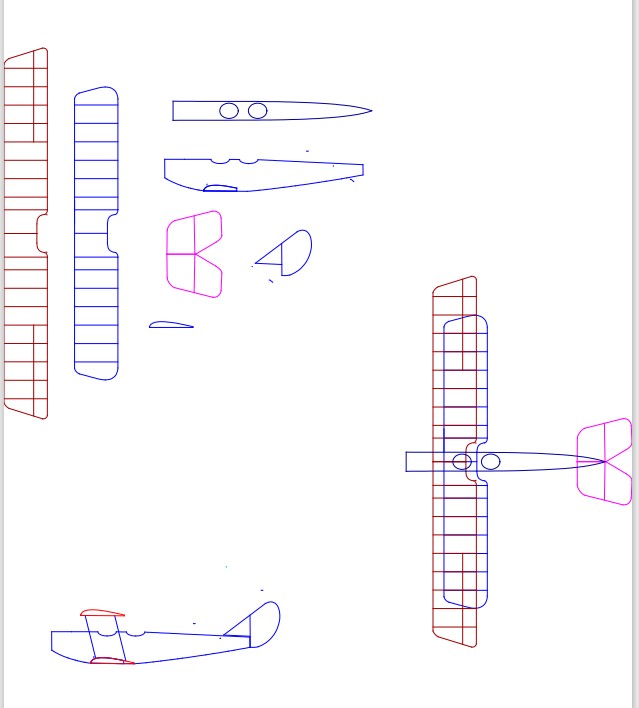
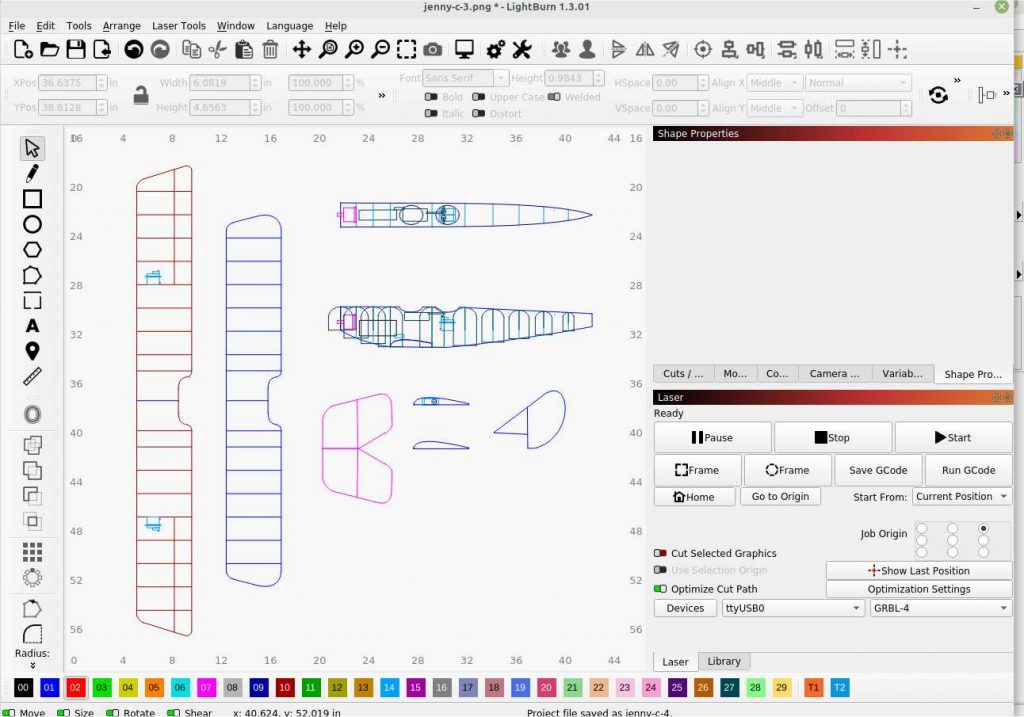
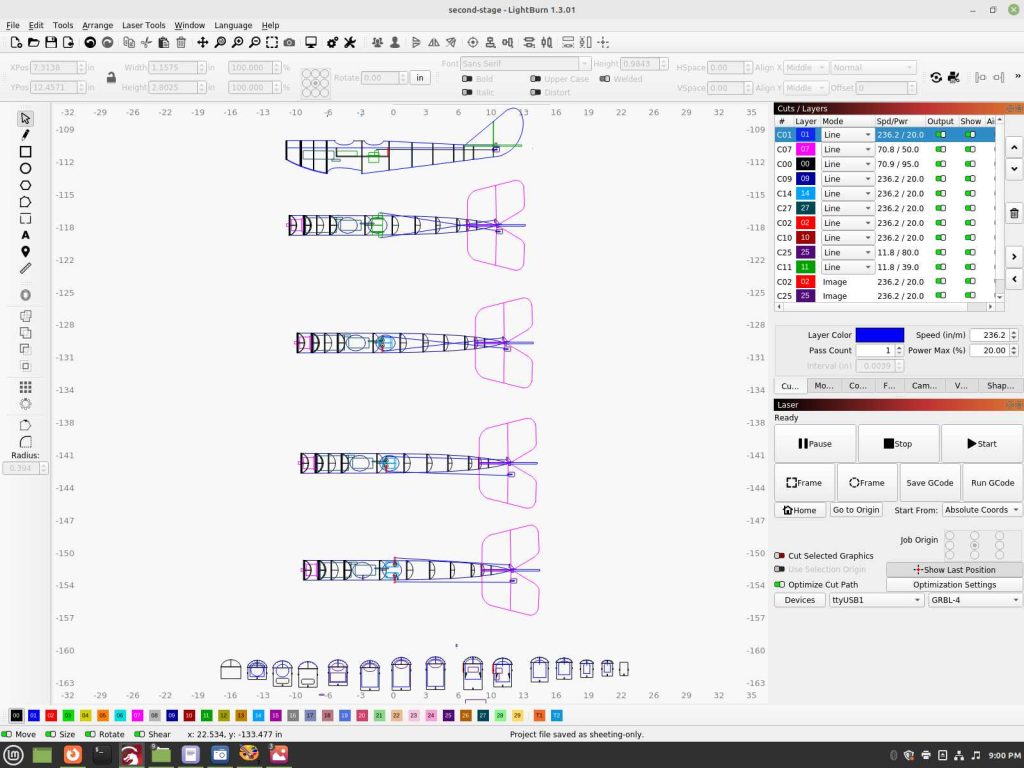
Further development on this bird is well under way. Sharing a couple of photo’s showing the basics resting together. The Jenny is about due for it’s own page all together at this stage to continue on beyond the Drawing board section of the web site.
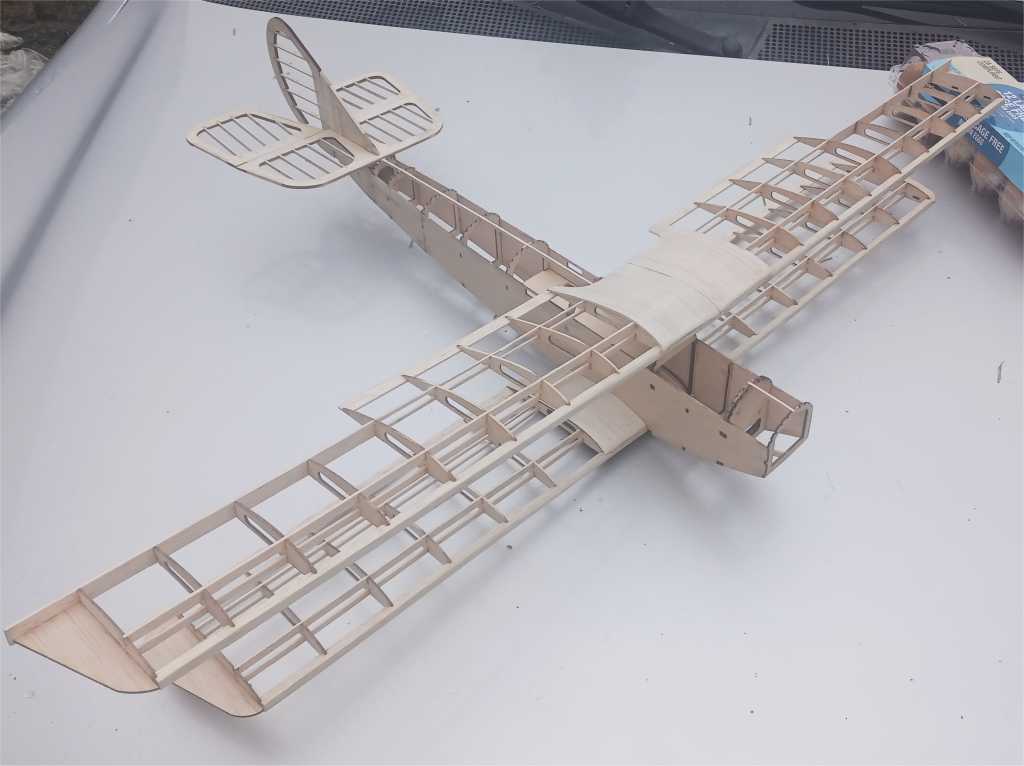
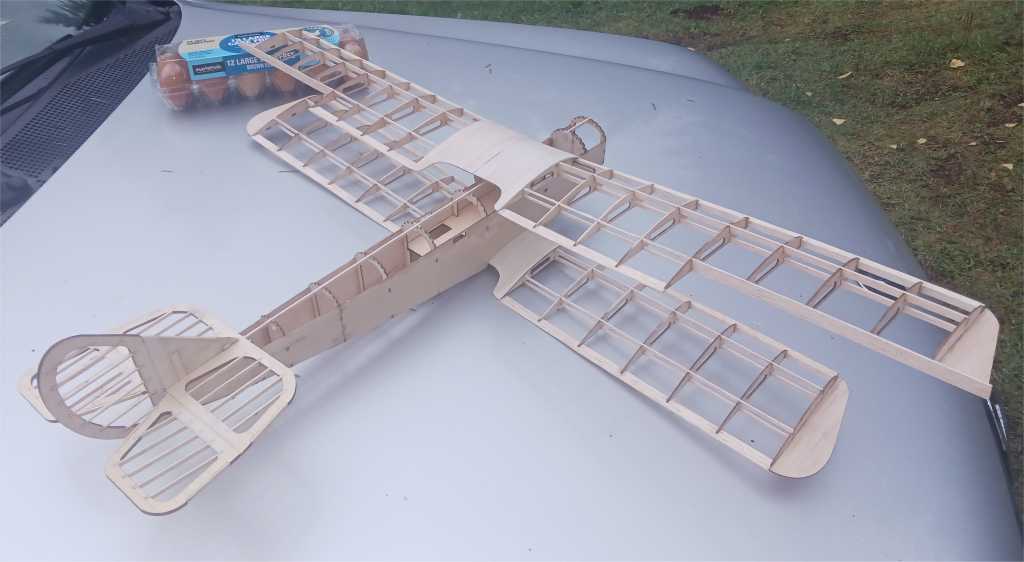
This next design is a twin boom pusher that was heavily inspired by an EPS foam based plane I’ve built and flown several of in the past. Free plans and instructions can be found here: https://foamflyer.info/plane.html. With this version I’ve opted to explore the use of combining cardboard and balsa together and the results came out quite well.
The wingspan is 34″, flying weight, 550 grams or 1.22 pounds, COG is perfect at 25% from the leading edge of the wing with no ballast required. The wing was covered in simple dollar store tissue with the rest in Ultracoat Parklite.
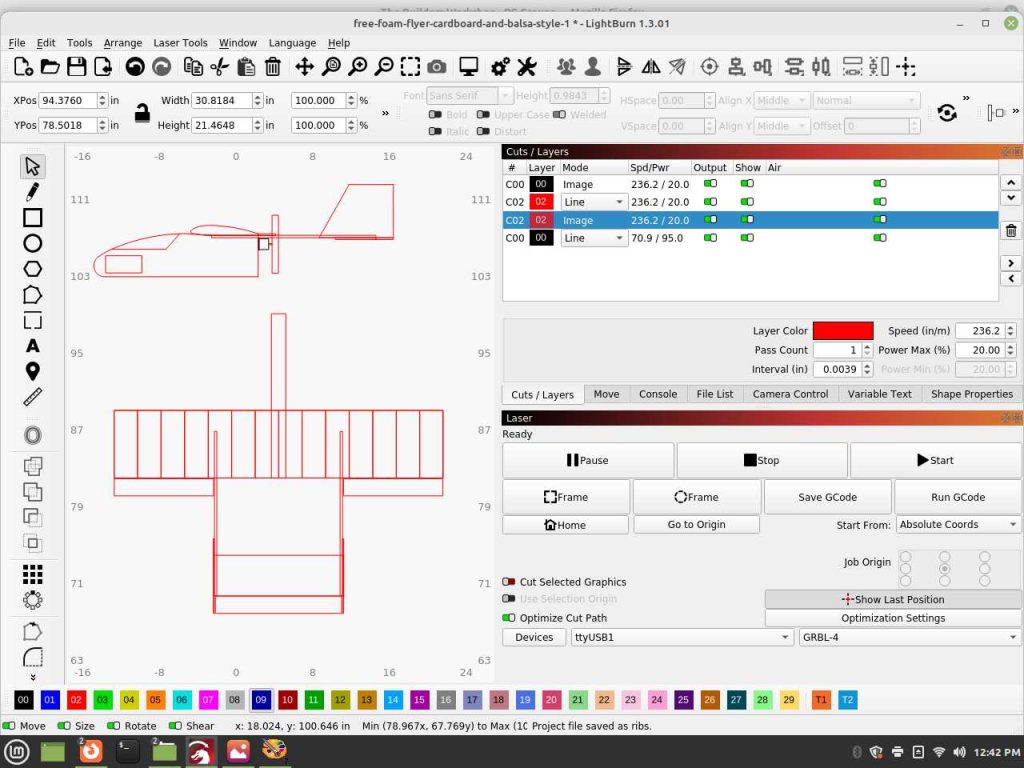
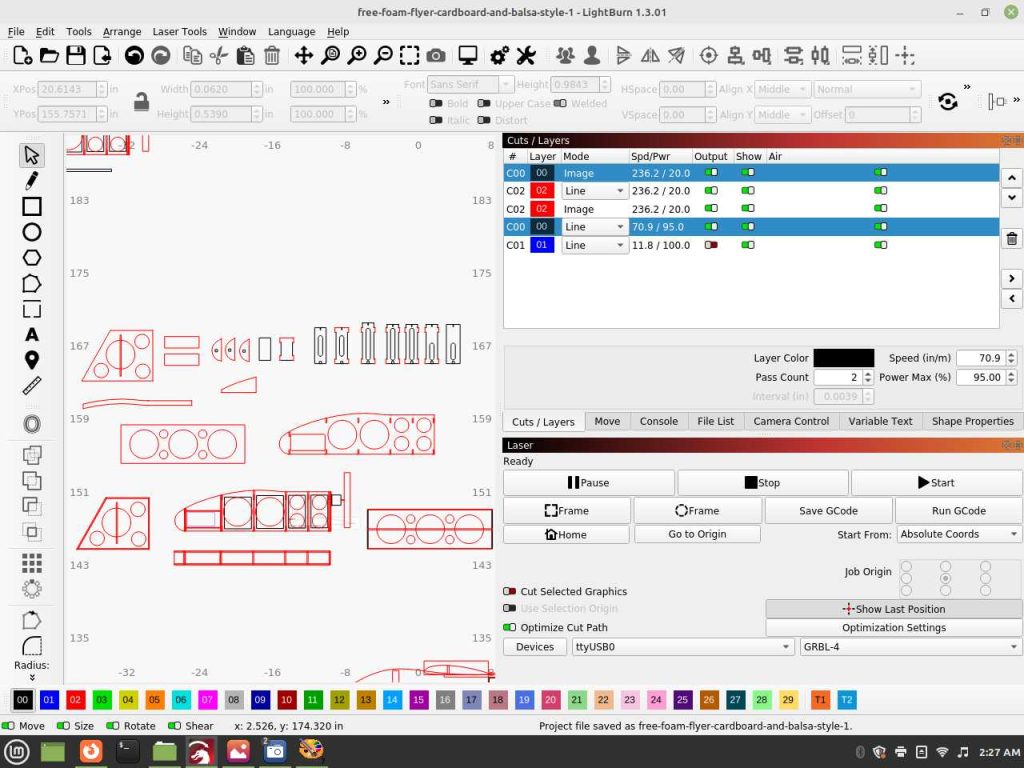


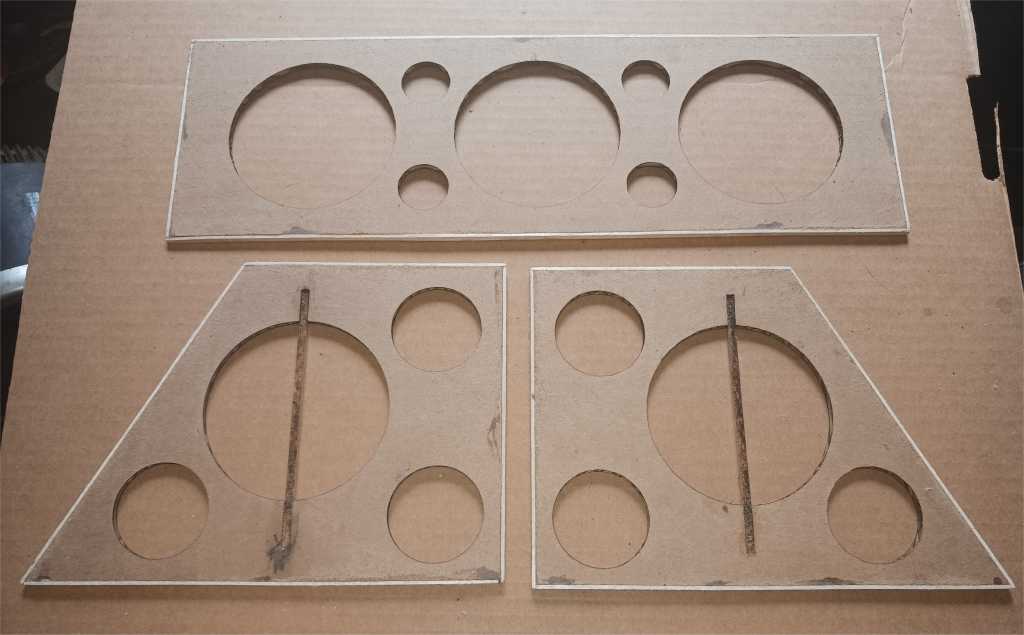
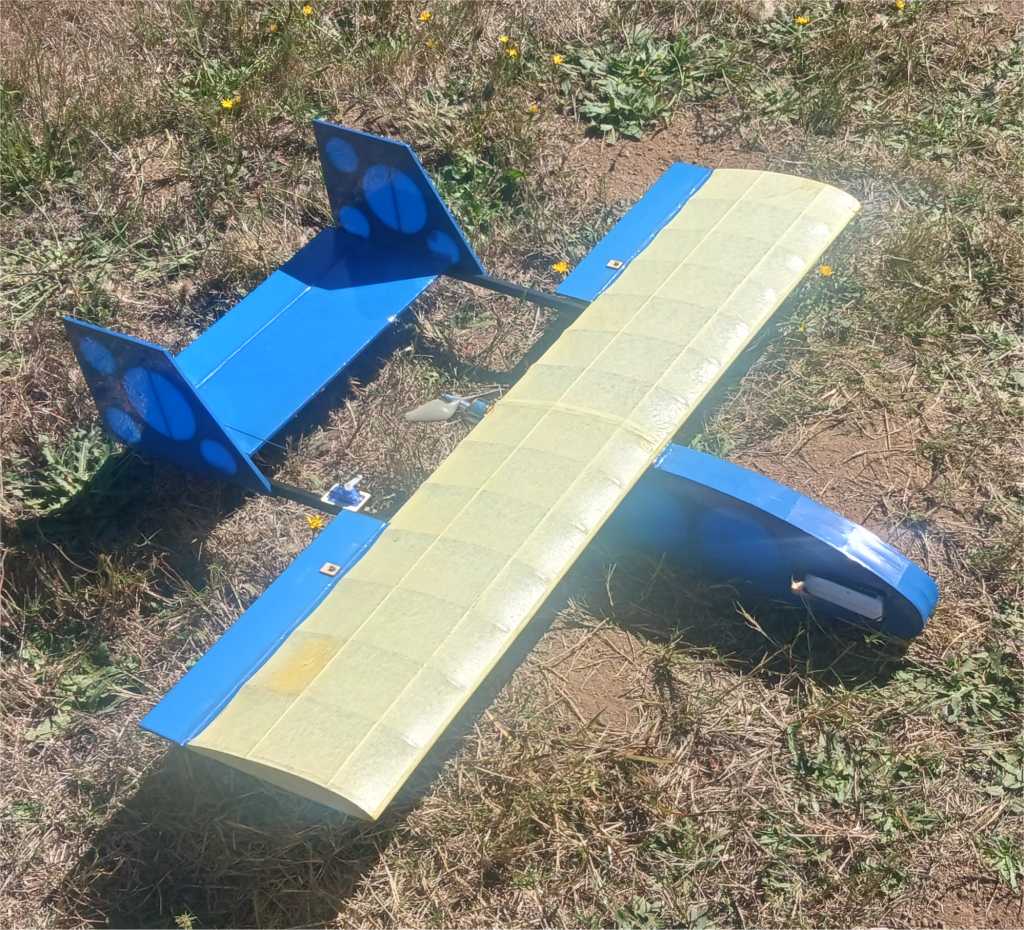
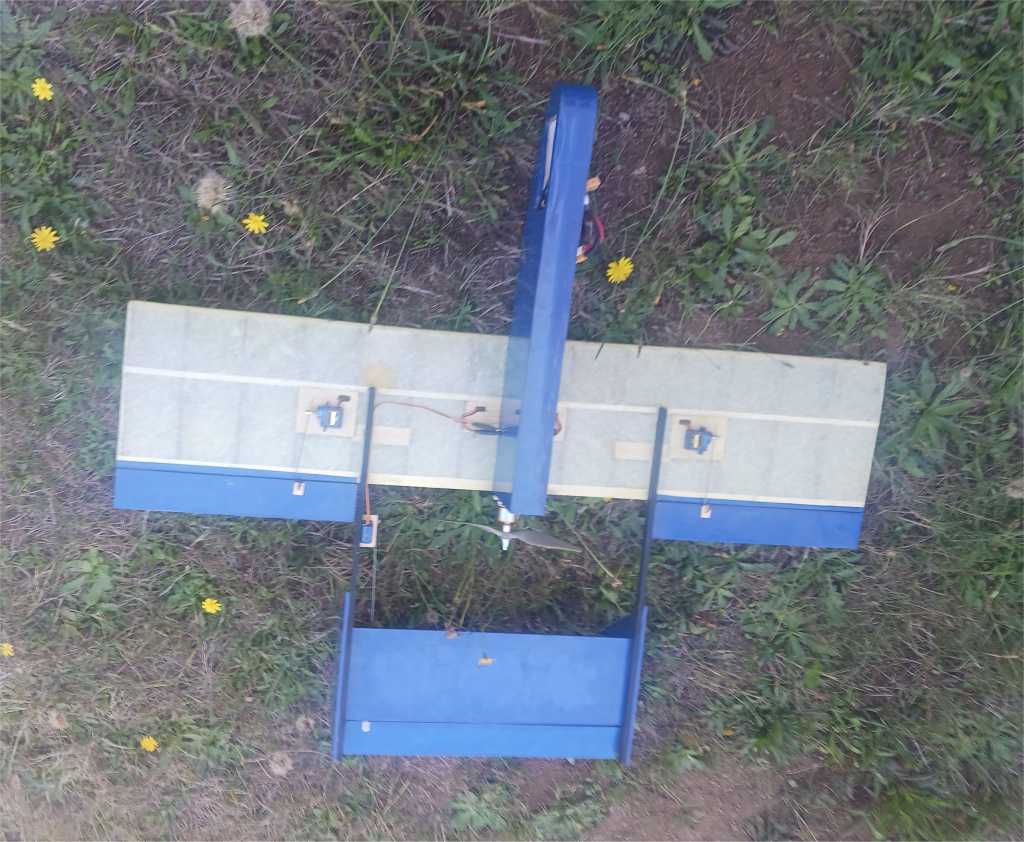
The results show a lot of promise working with this combination of materials.
New wing options for the AeroScout
After enough rave reviews on this particular plane, I opted into checking it out further, a trainer that’s very new flyer friendly, done up by the big box foamie operations. It’s not super original on design, they did though put in some extra effort into the gear to help rc pilots handle the gambit upon learning to fly and more advanced levels. I’ve opted to come up with some old school, stick and covering versions for wings that can bolt into it, no modifications needed and to include the original gear can be switched out into it with no revisions needed.
The following shared shows some of the design process, in this case, starting out with some small chuck glider versions to test out the new configurations. I started out with the stock format, just smaller in scale and progressed from there, for a swept back wing, and a slow flyer version.
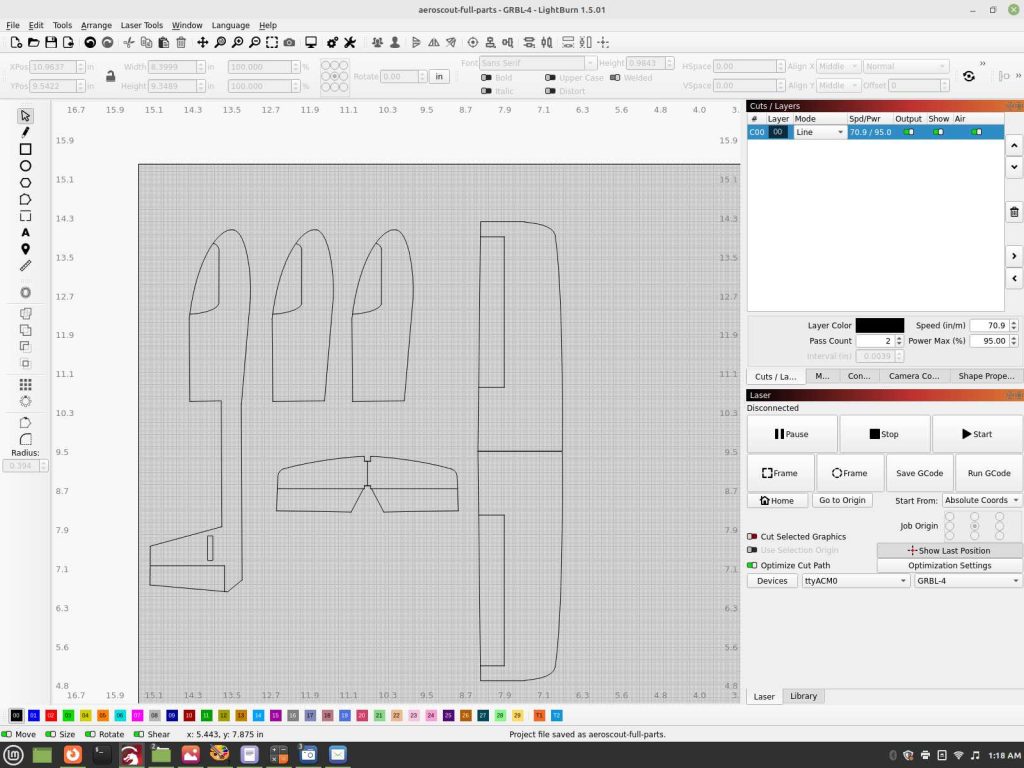
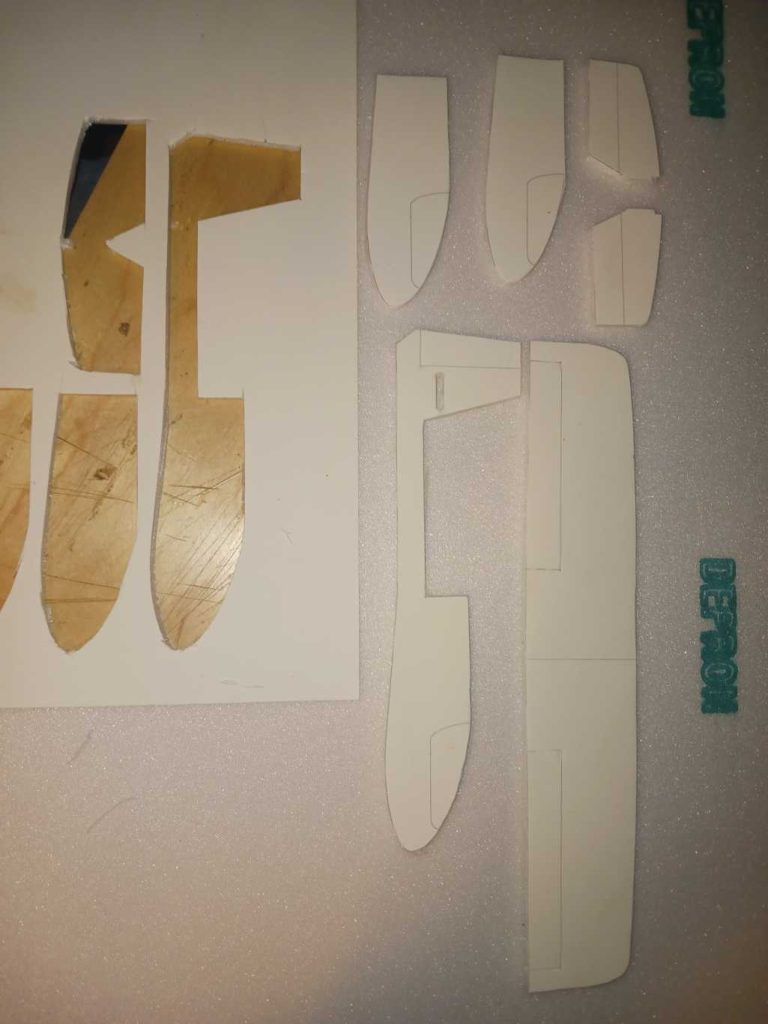
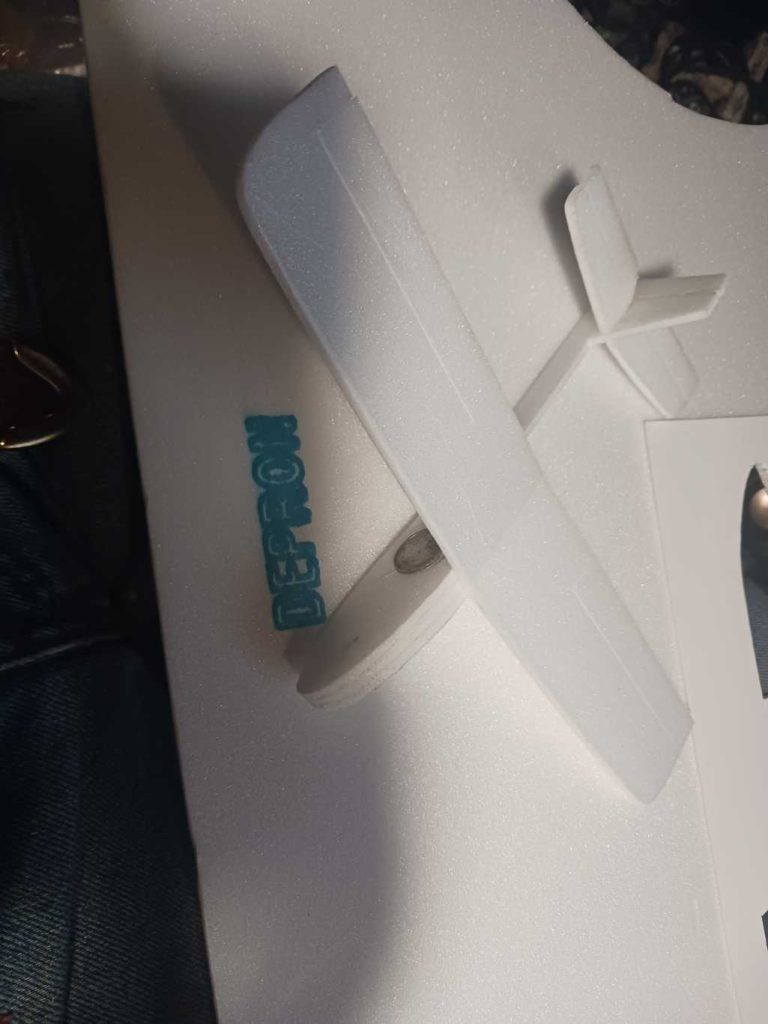
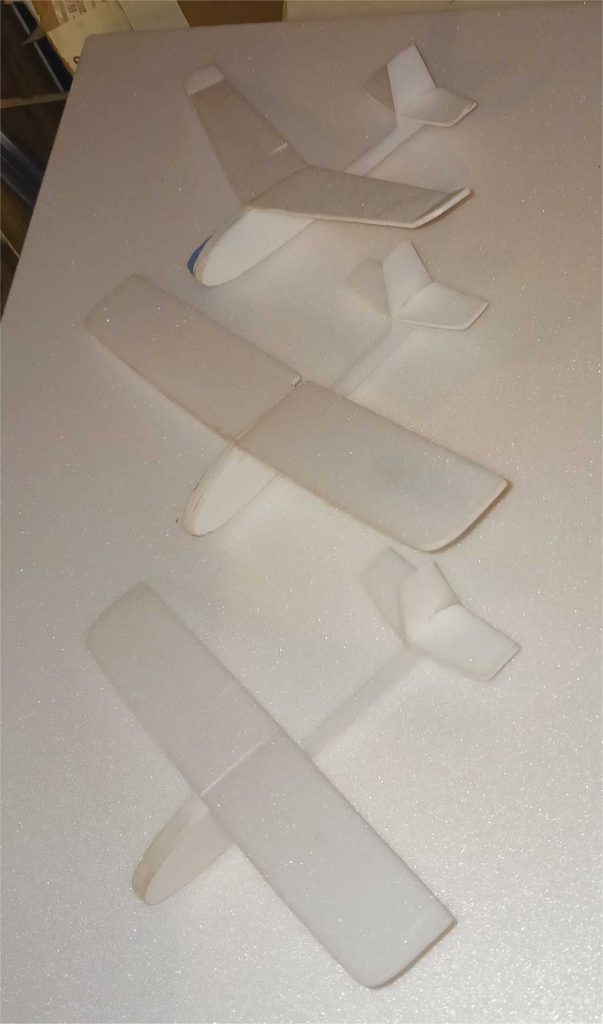
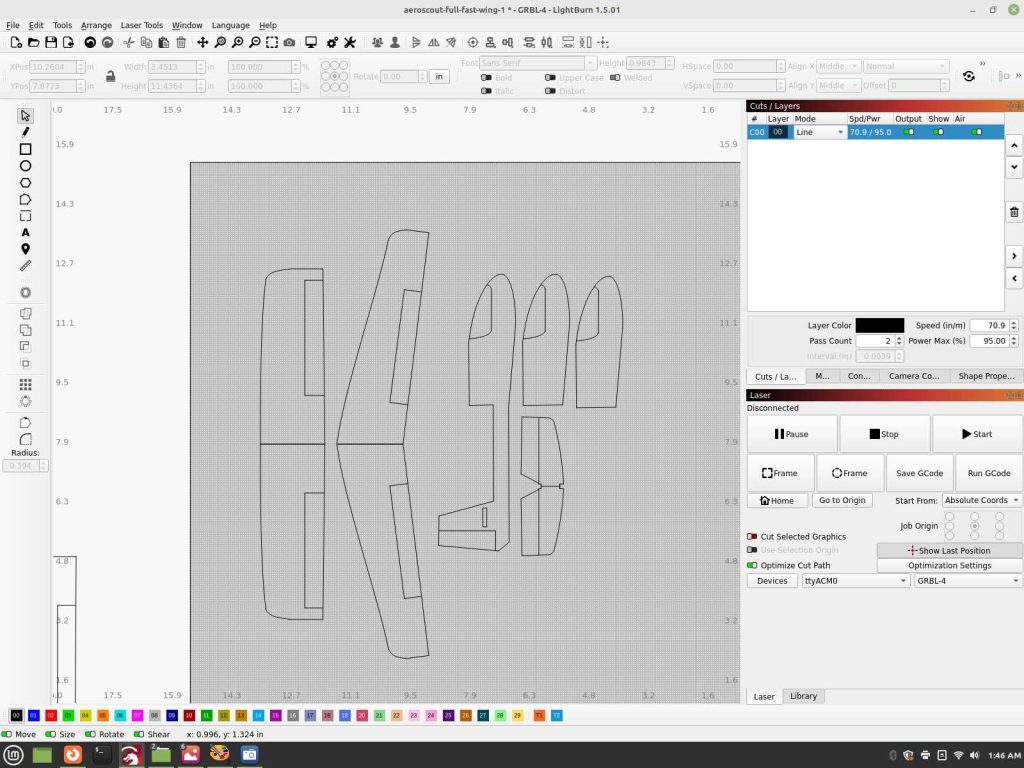
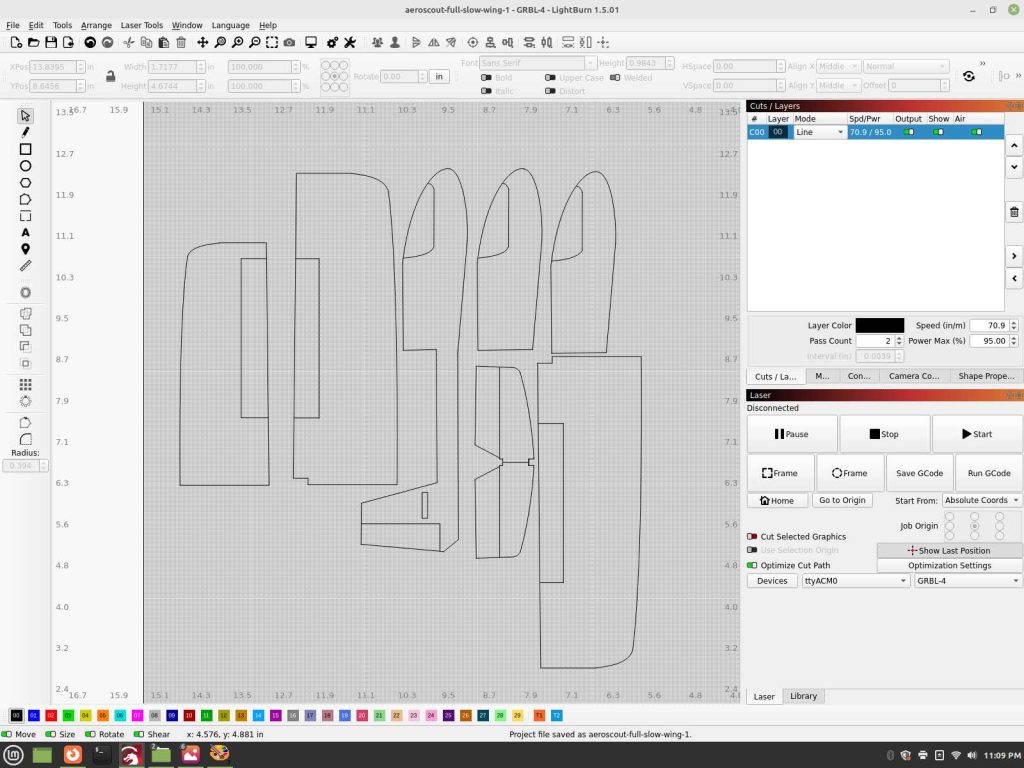
I took a top view for those not familiar with this bird, to show also how the new configurations are going to integrate.
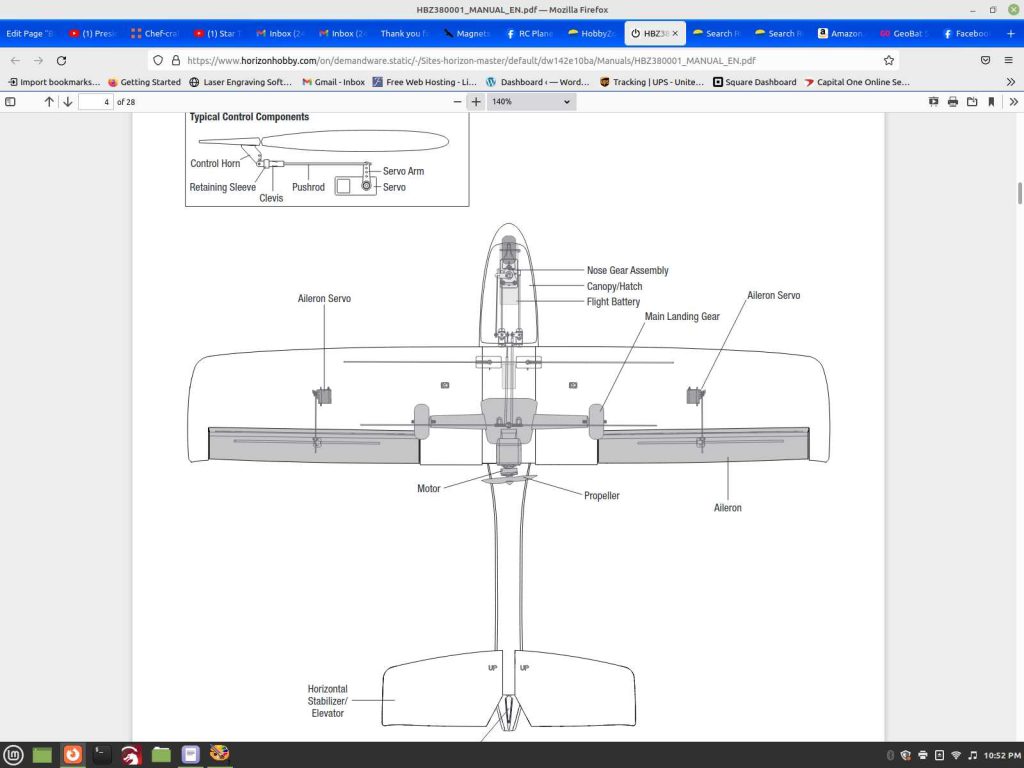
Swept back wing version, 10.5″ Wingspan
Slow flyer version, 12″ wingspan
Both of them exceeded the distance in free flight compared to the stock version below.
https://youtube.com/shorts/hv7OaASgcQc
Both wings are developed, assembled and being sent off for final gearing up, connections and testing in a stock Aeroscout air-frame, scotch taped in place to show placement for the aileron and winglets. These will be available in kit form after the testing has been complete.
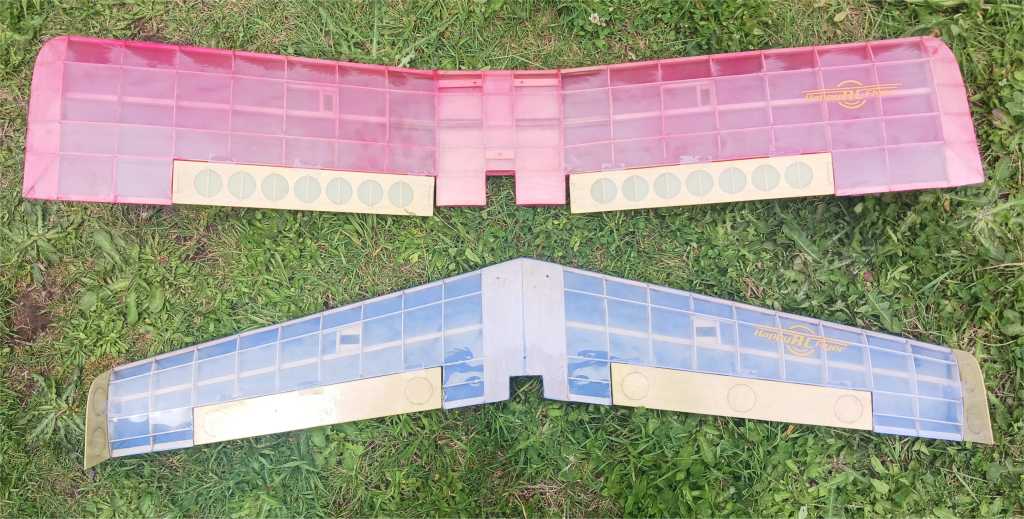
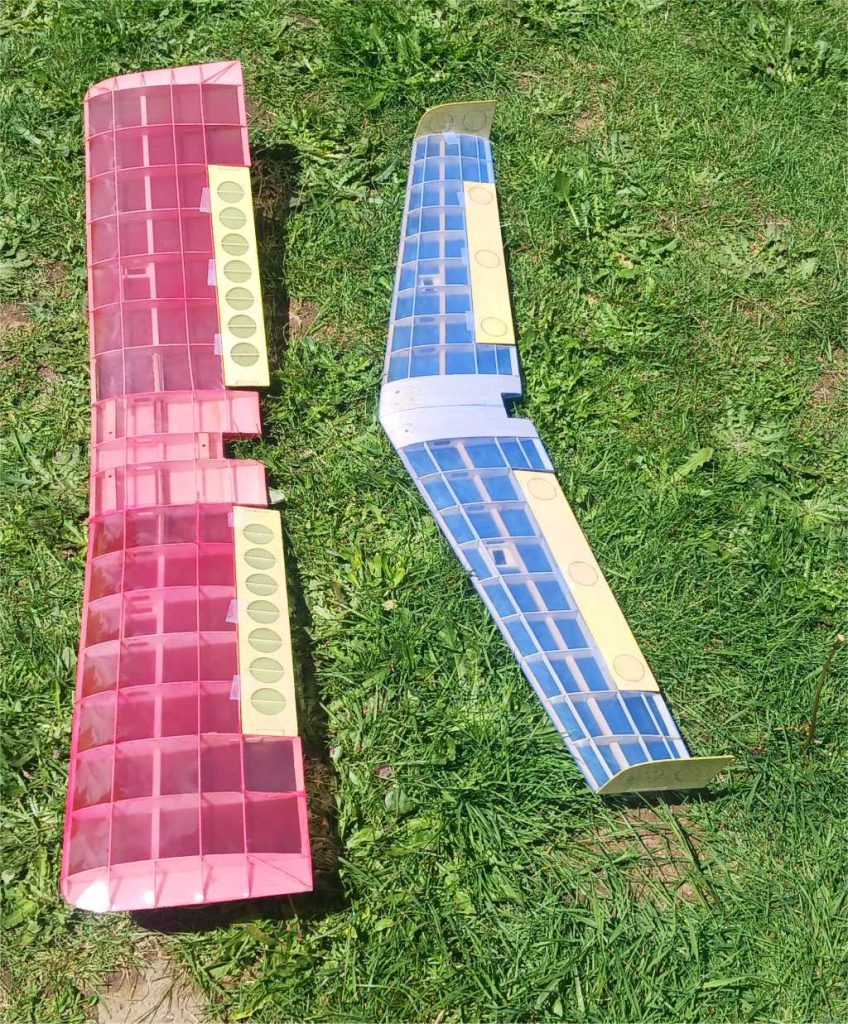
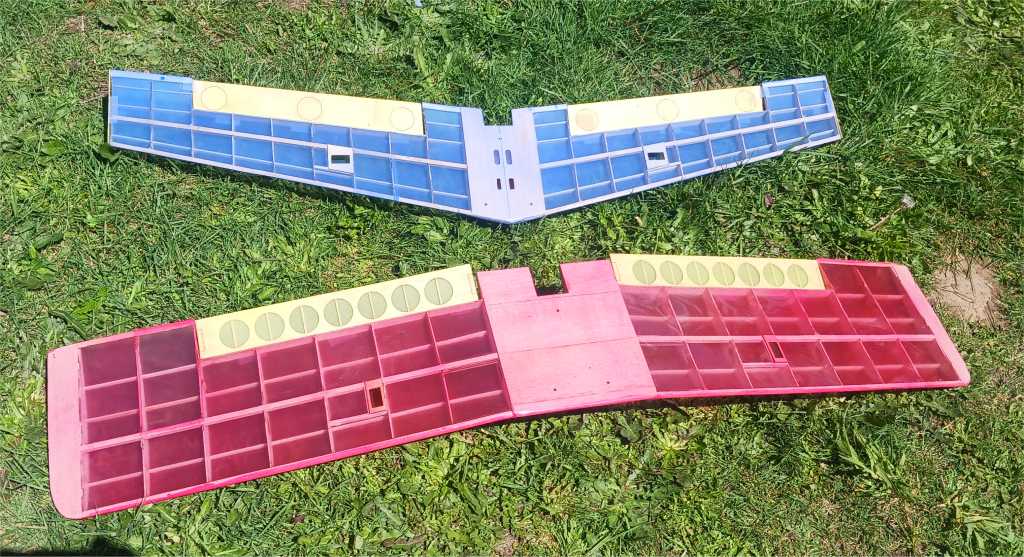
Sharing the mounted and tested version of the swept back wing, it’s maiden went well, some minor revisions are going into place for the production version of the kit before it’s ready for production as a new wing kit option.

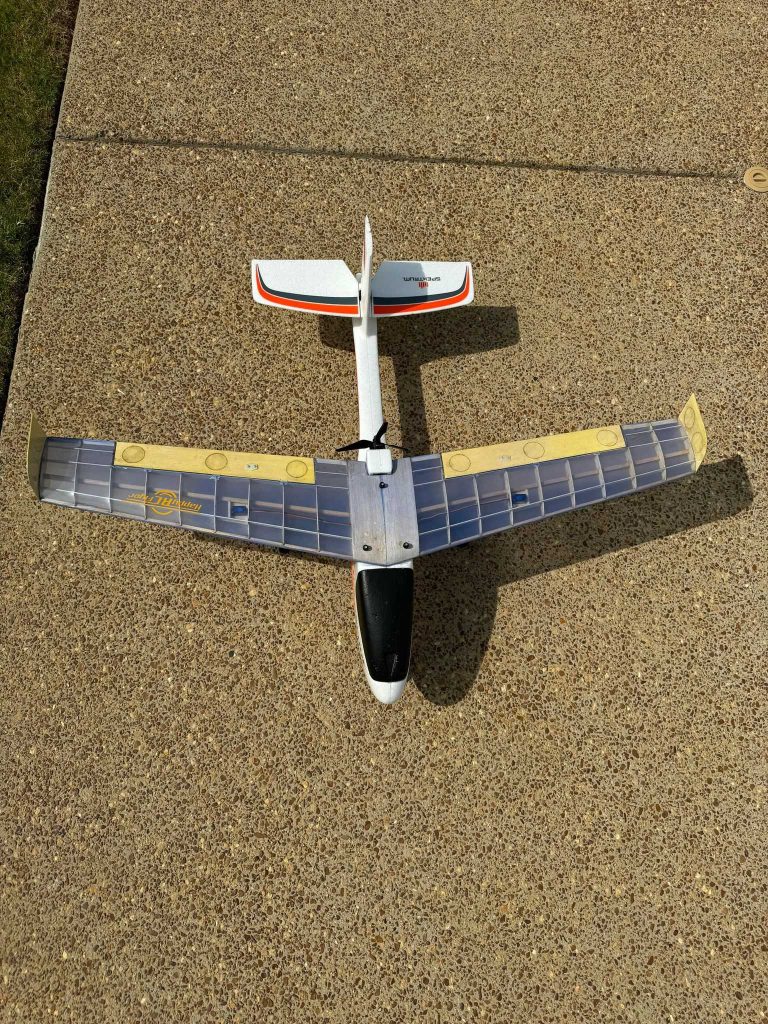
Showing the slow wing version with the wing set in place prior to gearing up, awaiting the maiden to share the report upon and get any revisions necessary addressed prior to bringing it to market as well.
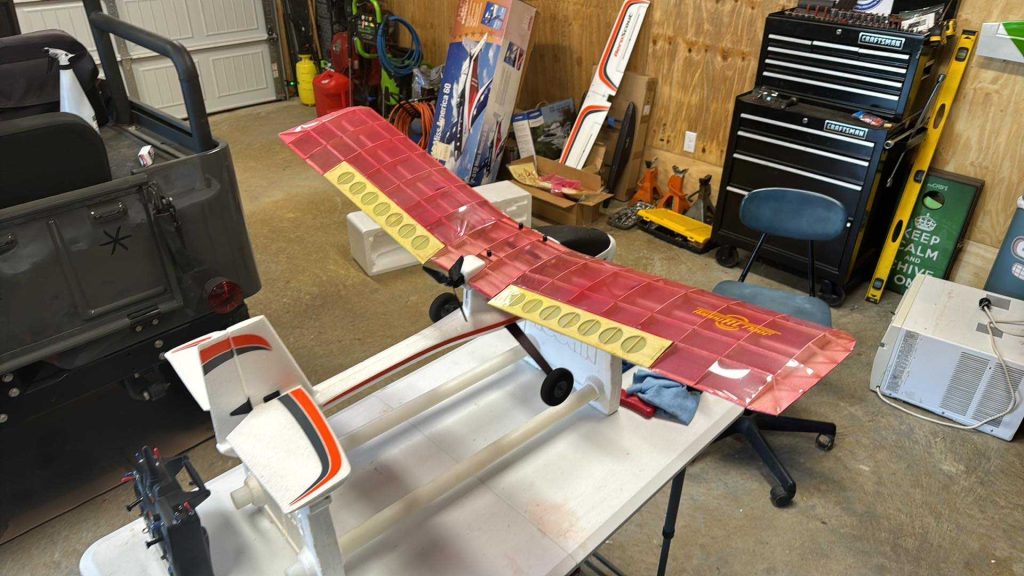
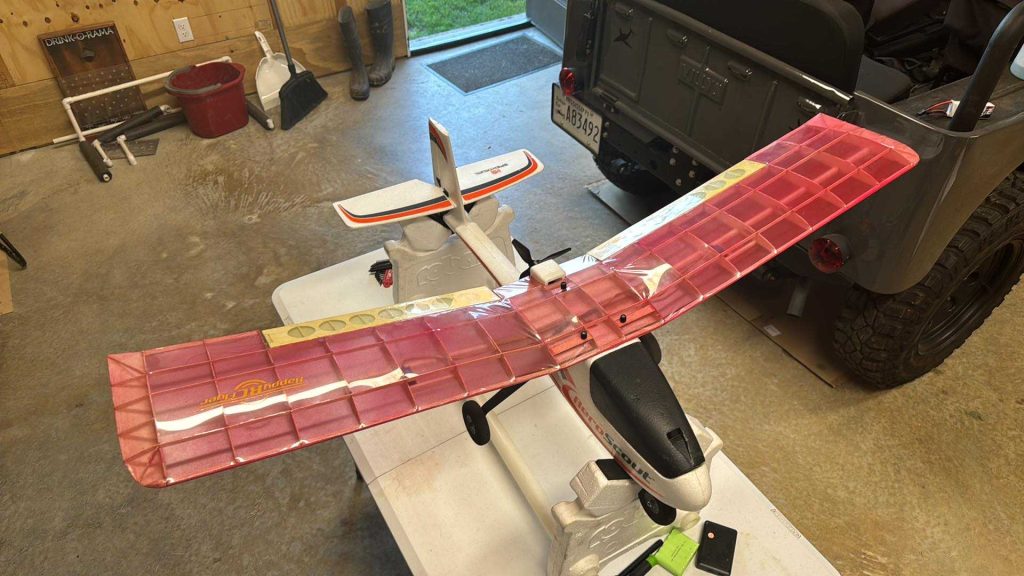
Sharing a third along the build table for now but not limited to is an out of this world, unorthodox space ship type of a design. In this case, it simply began with a random idea for a plane and some insomnia, with some Depron and hot glue on hand for the inspiration. The small chuck glider version of it flew quite well, worthy of further exploring it as an RC plane.
I opted to bash out by hand a 30″ wing/saucer span of it with light weight RC gear and found it flew on rails, to the point, this was easier then the most simple trainers, not needing SAFE or the rest. Aileron/elevator control is all it needed, traditional tractor style prop/direction and it was a matter of it being a very predictable, easy to fly plane with no bad tendencies except for upon landing, it rolling over to it’s nose since there is no landing gear in place upon.
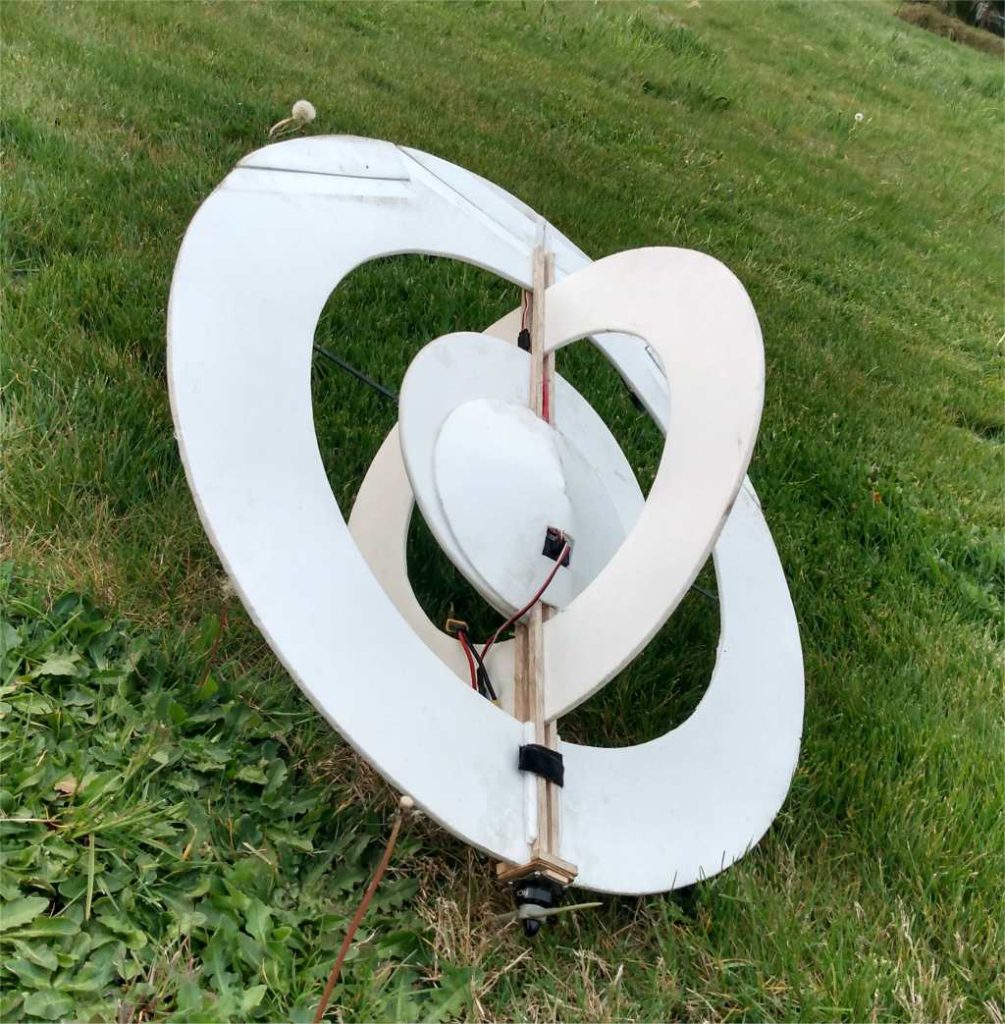
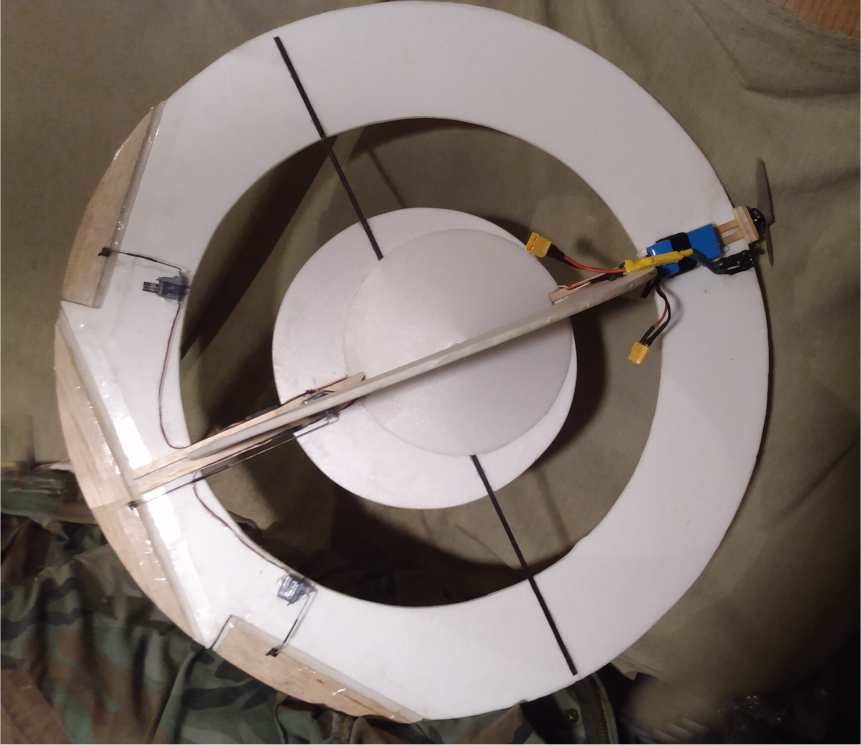
The next stage designing it for the laser cutter, balsa and covering format while tackling the landing gear issue. Rough stage in progress shown.
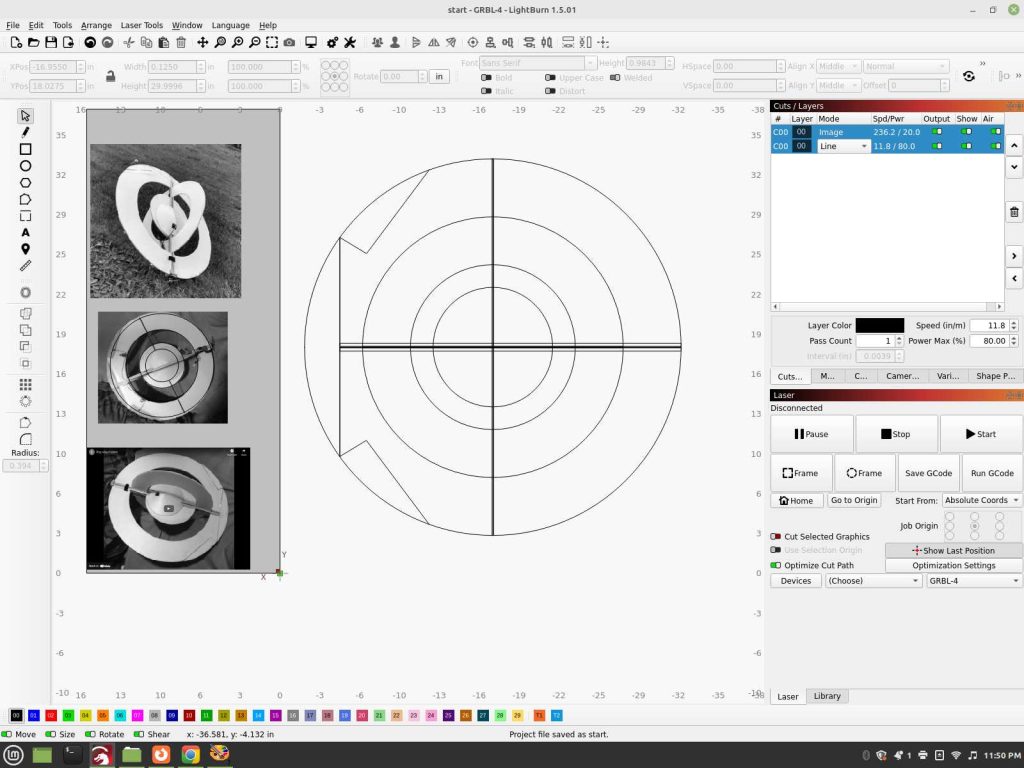
Moving onto an amusing, nostalgia for me design, a Star Trek, TOS version, Romulan Bird of Prey. I’m sharing some quality work rendered up, leaving the outside party url in tact to share, my inspiration upon for the lines, along with additional works by others, for use as well to help along keeping it stock looking.
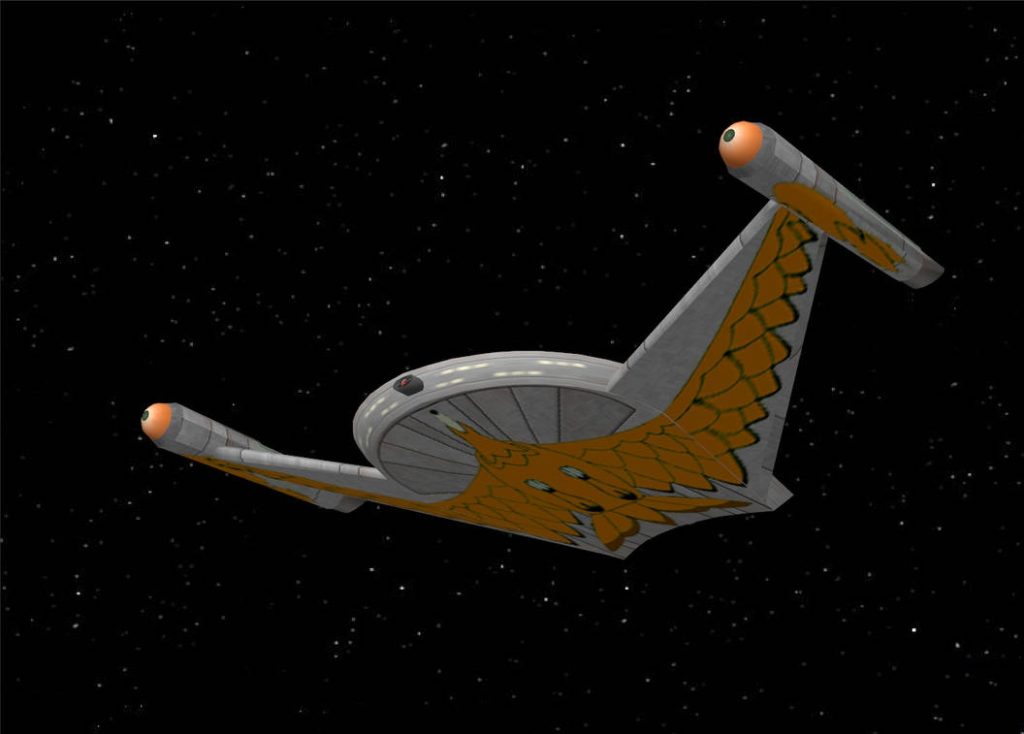
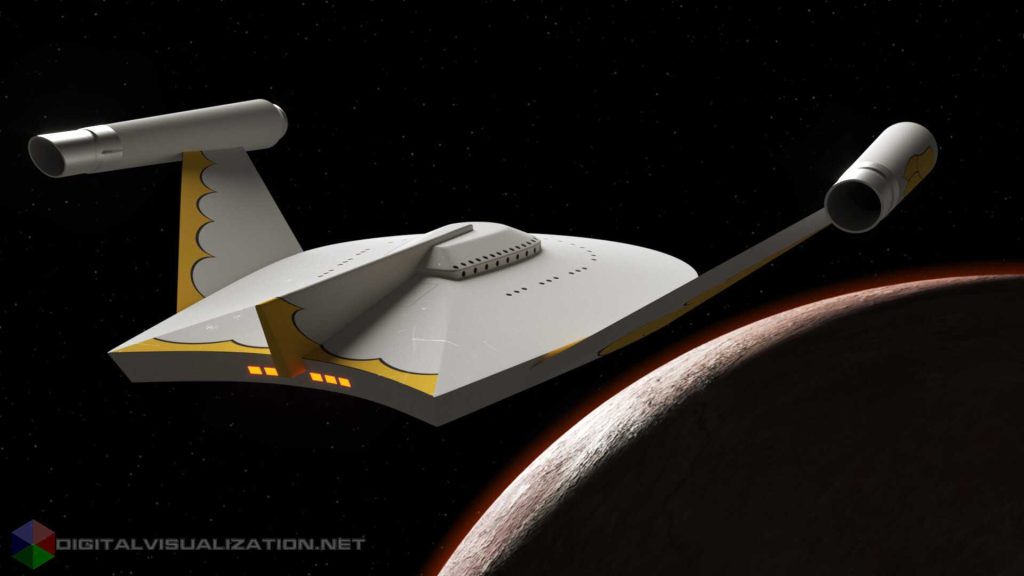
I’m sharing the more blue print looking diagrams for the rest of this bird, it was just designed by default for flying well in the atmosphere, in their minds back then, entirely fictional and in hopes it would perform well in the real world.
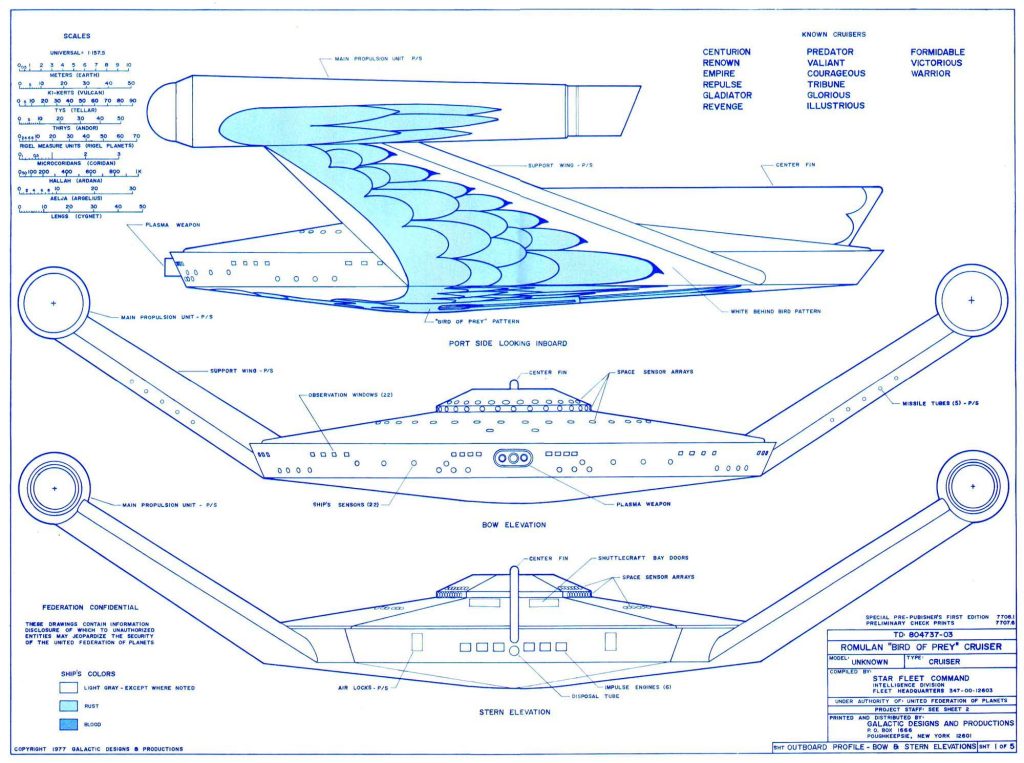

Amazing works done by prior artists, following their lead, I came up with a new plan for people to cut out their own Romulan War Bird out of 3 mm or 1/8″ Depron, common foam board can be used as well.


The PDF plans are downloaded here: https://happyrcflyer.com/romulan-war-bird-print-2
This, being a simple, small, print out on one piece of standard printer paper sized chuck glider I do from time to time when so inspired with new designs and ideas showed serious promise from general fly-ability, the glide ratio was very good. I was amused too, with the oversized dihedral, this plane auto corrects itself to fly upright, no matter how it was launched, upside down, sideways, cross winds, etc, talk about a perfect trainer. I did try it out without the center/aft fin, it proved doable with hard handling on the sticks and/or computer control, but it’s much better with this small simple fin added onto it, as per the stock Romulan Bird of Prey anyway.
A larger, RC, stick and covering version of this is in the works on the drawing board, many details and revisions along the way will be conveyed, stay tuned!
Another plane, I call the Jetsons flyer, is using a concept designed for fiction and turning it into reality.
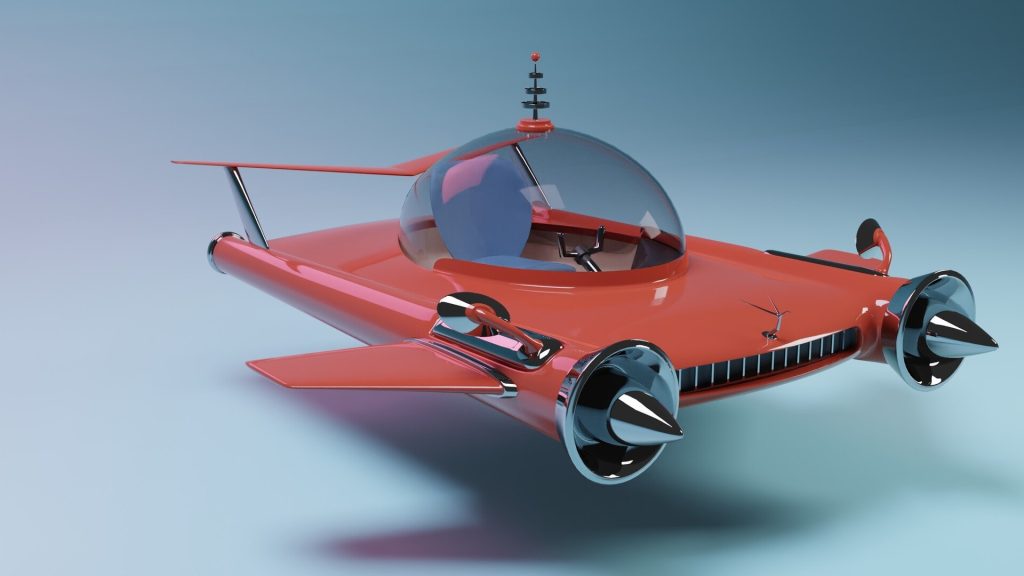
I wasn’t expecting much, if anything for exploring this design to actually fly well enough to pursue, yet it rather impressed me and the horizontal stabilizer actually done up with a dihedral does a very good job at keeping the platform stable.
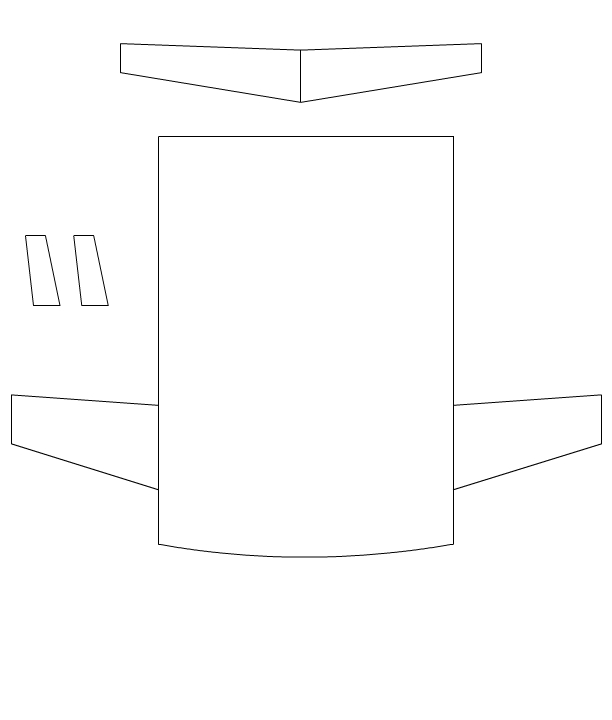

The simplified format via. chuck glider mode shown, is a worthy candidate to pursue further for free flight and RC.